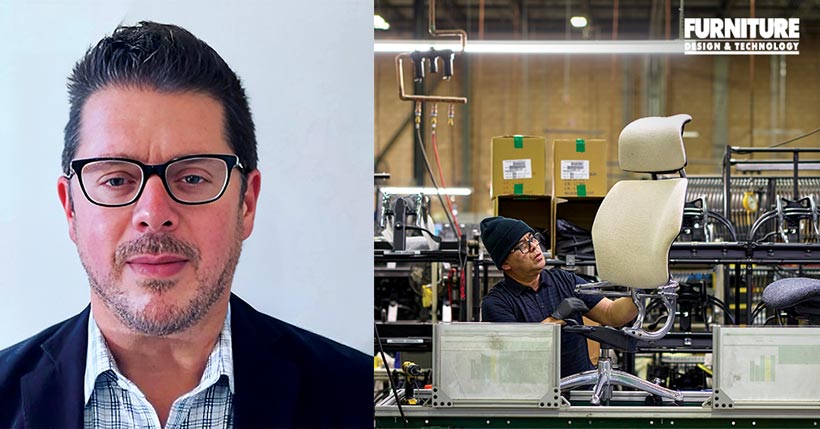
From eco-conscious designs to user centered ergonomics, Mark Consolla, VP of Product Management at Humanscale, discusses how the company creates functional, adaptable workspaces that seamlessly blend comfort, aesthetics, and sustainability.
What design principles does Humanscale employ to create functional yet aesthetically pleasing products?
Humanscale is founded on the principle of creating ergonomically friendly products. The second key aspect for us is sustainability -creating products that are not only functionally ergonomic but also the most environmentally friendly on the planet, which is no easy feat. Our greatest asset in the design process is our customers. Our design team is based in New York City, and we design most of our products in-house. Occasionally, we collaborate with external designers. Being in New York, we have a large and diverse customer base, with whom we maintain a close relationship. Personally, as well as through our Vice President of Design and sales leaders, we meet with our customers not just to sell them products but to exchange ideas. We discuss what works for them and what doesn’t, whether it’s our products or those of our competitors. We are fortunate that many of our customers are technologically advanced and understand the role of technology in the workplace. We work with them as partners to integrate their desired technologies into our product designs. Of course, ergonomics is at the top of our priority list. We ensure that all our products adjust to the person and not
the other way around. Sustainability is another key factor because it’s a core value that we take seriously.
You are based in New York, a cosmopolitan city like Mumbai, with people from diverse social and cultural backgrounds. As a product designer, is it ever a challenge to cater to such diversity?
Yes, it is a challenge. We follow certain rules and take into account varying body types and heights. Not everyone is five foot-ten like me. We develop products that cater to a wide range of people, from those under five feet tall to those over six and a half feet. The challenge arises when customers may only be purchasing a single component, like a chair, a monitor arm, or a light, rather than our entire workstation setup. We must consider the compatibility of our products with other products in the market and ensure they can be used effectively in a variety of environments, whether it’s a home office, a traditional office, or a couch setup.
.jpg)
What design strategies does Humanscale employ to integrate eco-friendly materials and processes?We were probably one of the first companies in the furniture industry to appoint a Chief Sustainability Officer, Jane Abernethy. Her role is to ensure that we meet rigorous sustainability standards in our product development. We scrutinize the chemicals used in our products and hold our suppliers to the same high standards. We are committed to avoiding the use of harmful chemicals and are proud to have achieved B Corp status, a third-party certification recognizing our sustainability and corporate responsibility efforts.
Our founder, Bob King, is passionate about environmental sustainability, and this drives us to create affordable, eco-friendly products. We believe that sustainability should be accessible to everyone, not just those who can afford premium prices. By leading the way, we encourage our competitors and customers to adopt more sustainable practices, ultimately benefiting the planet.
How do you foresee the role of ergonomics evolving in the future of workplace design? What steps is Humanscale taking to adapt to this evolution?
We have developed our own software and employ a team of ergonomic consultants who are educated at the university level. This team doesn’t design, sell, or make products; their sole purpose is to provide ergonomic consulting services to our clients, regardless of whether they use Humanscale products or not. They evaluate workspaces and help companies set up ergonomically correct environments. Additionally, we create software that our customers can use to improve the ergonomics of their spaces. We hope that this leads them to utilize our consulting team for more advanced ergonomic solutions.
What steps is Humanscale taking to expand its presence and adapt to the Indian market?
We have been a global company for decades, and one of my key focuses since taking on this role has been to expand our international presence. We always consider the countries we sell to and their unique sustainability requirements.
Furniture Design India and the magazine FURNITURE DESIGN & TECHNOLOGY (FDT magazine) are from the trusted 22-year-old media house of SURFACES REPORTER and PLY REPORTER.
FDT is a B2B monthly bilingual magazine from India that shares the pulse of the furniture business in India and connects the manufacturers, OEMS, product designers, architects, showrooms, designers and dealers.
Read More© 2025 Furniture Design and Technologies.. All Rights Reserved. Developed by eyeQ Advertising